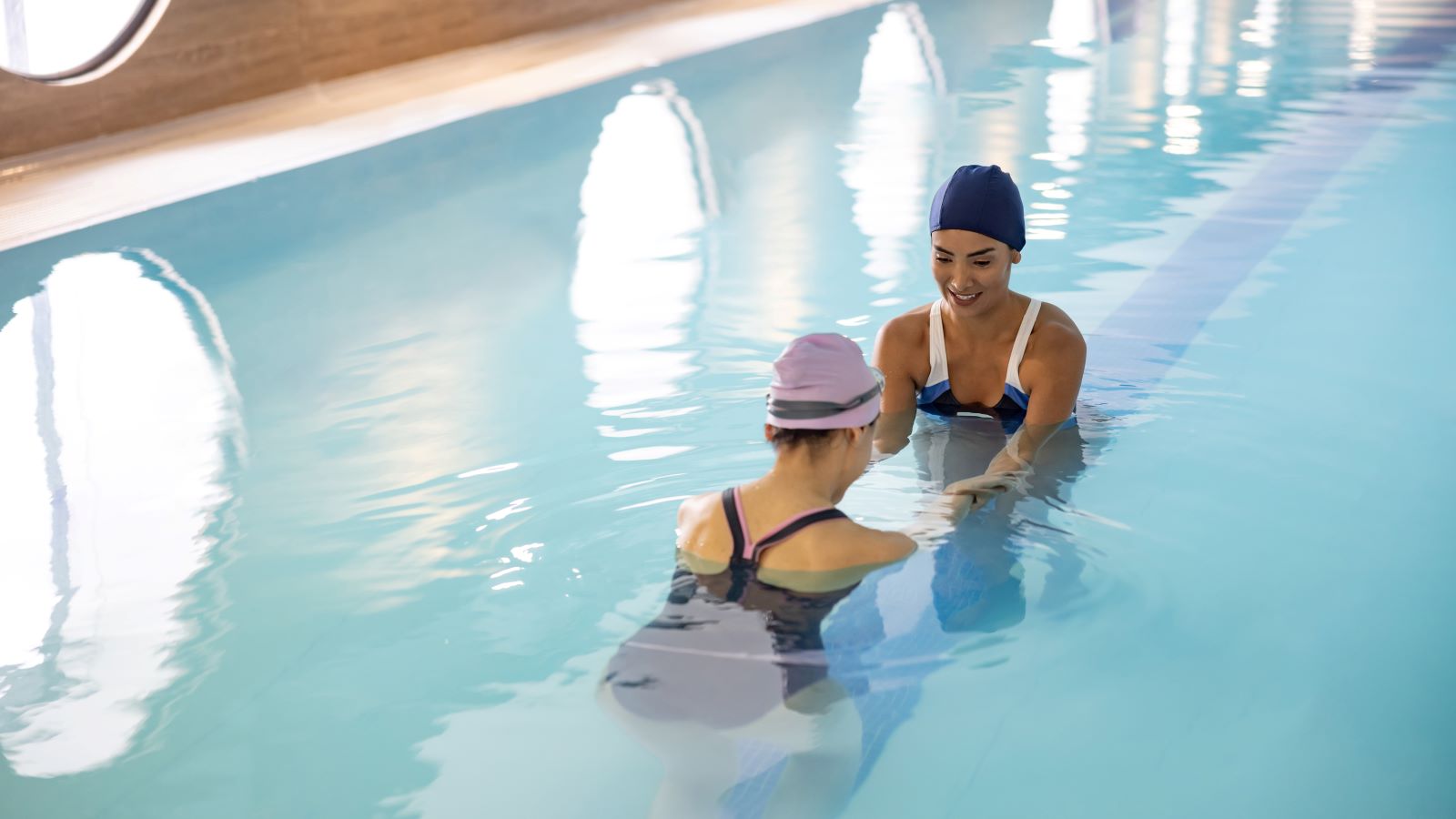<< Back
How Aquatic Therapy Can Help You Heal From an Injury

September 25, 2023
If you’re on the mend from an injury, don’t be surprised if your doctor or physical therapist suggests you head to the pool – even it’s not summer.
A far cry from the childhood swim lessons of your past, aquatic therapy offers a way for patients of any age to decrease pain and increase mobility.
“Aquatic therapy is low-impact, which sets it apart from traditional therapies. And, being in the water provides cushioning for people with advanced pain and musculoskeletal issues,” says Amanda MacIntyre, a physical therapy assistant specializing in aquatic therapy rehabilitation with Hartford HealthCare.
Here’s why you should give aquatic therapy a try if you’re recovering from an injury.
3 benefits of aquatic therapy.
Unlike most pools you encounter, many therapy pools are warmed, allowing your muscles to relax so you can get the most out of your exercises.
Aquatic therapy also offers benefits that traditional therapy doesn’t, including:
- Lower risk of fall, which allows you to do more strenuous exercises or work on balance.
- Less impact on your joints and muscles, making it a great choice for those with chronic pain.
- Lower resistance, so you can do more targeted exercises without fatigue.
For most people, your individualized physical therapy plan will also include a mix of land-based traditional physical therapy.
“Strengthening therapies can be land-based while mobility targeting therapies can be in the pool, so that you get a good mix of all the benefits,” says MacIntyre.
> Related: 4 Water Safety Myths, Debunked by an Expert
People with certain injuries or conditions will benefit even more from aquatic therapy.
If you have a condition that limits your mobility or impacts your muscle strength, you might find aquatic therapy to be even more helpful. Some diagnoses include:
- Chronic pain
- Arthritis
- Recovery after back, knee or hip surgeries
- Stroke
- Spinal stenosis
Can I try aquatic therapy on my own?
If you want to test the waters and feel the benefit, MacIntyre suggests some moves for beginners:
- Water walking or jogging. In three feet of water, take 10-20 steps forward then backward, then side to side. Increasing your speed and distance will increase difficulty, or consider holding a kickboard if you need additional support.
- One leg stand/balance. In the water, stand by the side of the pool and raise one knee at a 90-degree angle to hip level, hold for 30 seconds. If you need extra support, grab onto the side of the pool.
- Side stepping. Keeping close to the pool wall, take 20 sideways steps in one direction then reverse. Hold your core firm and tight.